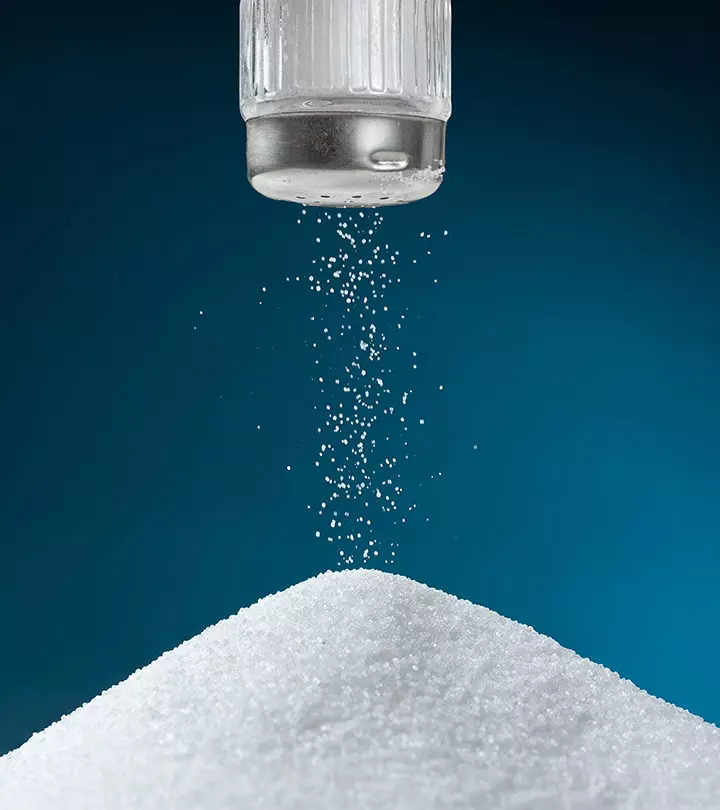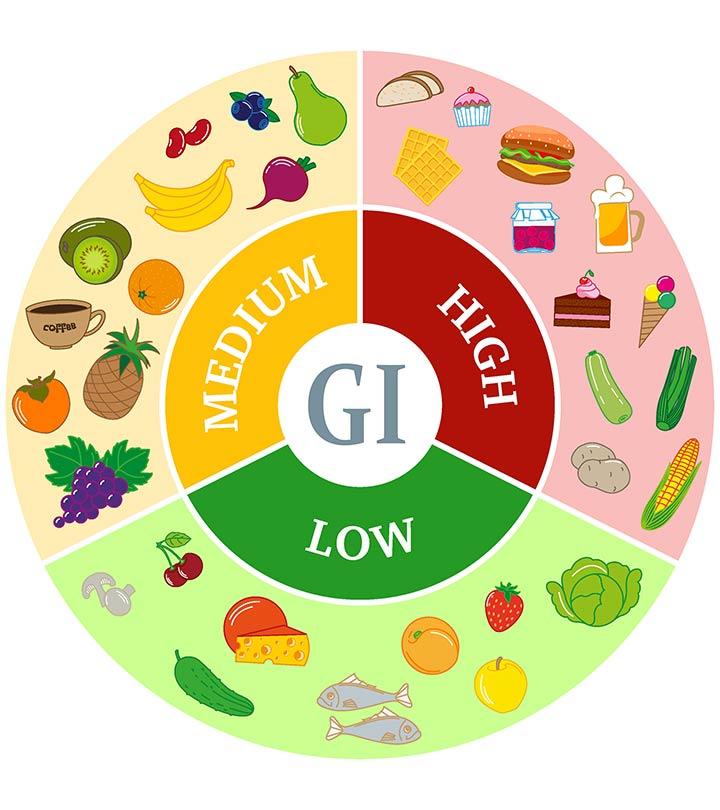Is Eating Ham Healthy? Health Benefits And Possible Side Effects
Know the advantages of consuming this delicious meat but be mindful of the downside too.

Image: Shutterstock
Pork meat or ham is usually eaten for its taste. It is commonly known as red processed meat. But what about ham benefits? While it is preserved by salting or smoking (that increases its shelf life), ham contains a few important nutrients too. Does this mean that ham can be safely consumed regularly? Or should one practice moderation? In this post, we tell you the truth about ham. Read on.
 Know Your Ingredient: Ham
Know Your Ingredient: HamWhat Is It?
A cut of meat that comes from the rear leg of a pig that is usually cured or smoked to enhance its flavor and extend its shelf life.
What Are Its Benefits?
It maintains bone health, promotes satiety, maintains muscle mass, and reduces the risk of thyroid disease.
Who Can Consume It?
Anybody can consume this except people with high blood pressure, heart disease, kidney disease, and meat allergy.
How Often?
You can consume two servings per week.
Caution
Avoid consuming if you are pregnant or breastfeeding. It may increase the risk of foodborne illnesses and cancer.
In This Article
What Is Ham?
The red meat of the rear leg of a pig is known as ham. It is generally preserved by a technique called curing. It is preserved using both dry and wet methods. Many consume it during Easter in several cooked varieties. While traditional curing methods used salt, modern methods add nitrites too. Spices are added after curing to enhance the flavor. The ham is later hung in a dark place for 2 to 12 months depending on its variety.
 Trivia
TriviaIs Ham Healthy?
Many of us seem to have this question: Is ham good for you? Ham is generally available in processed forms and is a red meat variety. Consuming it in very limited quantities and choosing unprocessed varieties may offer some benefits. But taking it daily, in excess, may not be a healthier option. Hence, knowing the calorific values of the different types of ham hay help.
How Many Calories Does Ham Contain?
| Type Of Ham | Calories |
|---|---|
| Slice | 126 |
| Ground | 60 |
| Cup | 203 |
| 1 pound | 658 |
| Deli | 353 |
| Baked (1 oz.) | 30 |
| Can ham (50 g) | 90 |
| Spiral (3 oz.) | 130 |
| Smoked (3 oz.) | 130 |
| Sandwich | 139 |
| Honey ham | 70 |
We have included the nutrition profile of ham in the next section. Continue reading.
Ham Nutrition Facts
- Fat: 3.15 g
- Carbs: 0.27 g
- Protein: 16.7 g
- Sodium: 1040 mg
- Phosphorus: 261 mg
- Zinc: 1.25 mg
- Potassium: 425 mg
- Iron:0.58 mg
- Copper: 0.05 mg
- Magnesium: 18.8 mg
- Selenium : 20 mcg
All values are sourced from USDA
Ham is available in different types. We have listed them below.
Types Of Ham
- Deli Ham: This flavorful, lean, and low-fat ham variety is cured. It is generally packaged as slices. It is also known as luncheon or cold-cut meat.
- York Ham: This delicious ham is made from the leg of a white pig. It is generally dry-cured.
- Smithfield Ham: This ham is cured in Smithfield, Virginia, and hence the name.
- Gammon: This ham variant is slightly cured. It must be completely cooked before serving.
- Prosciutto: This high-quality is considered the finest sliced ham. It is also known as Italian dry ham. It is generally served uncooked.
- Jamon: This type of ham is especially popular in Spain. It is one of the longest cured ham varieties. It has an intense flavor and less moisture content.
- Honey-Glazed Ham: This ham type is prepared by heating with honey or sugar syrup. Spices are also added to enhance the flavor.
- Country Ham: This ham is mostly associated with the southern part of the United States. It is heavily salted, cured, and smoked. It is mostly served at dinners.
- Chopped Ham: This ham type is chopped into the finest pieces and mixed with seasonings and spices to enhance the flavor. It is then made into loaves.
- City Ham: This ham variant is precooked and slightly cured. You should heat this ham before serving.
- Black Forest: This ham variant is believed to have originated in Germany. It is smoked, cured, and fatty (⅕th of the ham is fat).
- Limerick Ham: This ham type is boiled in spices and cider and then baked. It is very popular in Ireland.
 Trivia
TriviaIrrespective of the type, ham intake is believed to have certain health benefits. We have discussed them in the following section.
Health Benefits Of Ham
1. Is Rich In Beneficial Nutrients
Ham has a significant amount of zinc and meets 9% of the daily requirement. Research shows that zinc is an important micronutrient for human metabolism that catalyzes many enzymatic reactions and helps in the regulation of genes (1). Ham is rich in protein, which is proven to offer an array of health benefits (2). Research shows that protein, when coupled with high calcium diets, can benefit bone health (3). This protein is rich in iron, vitamin B12, omega-3 and omega-6 fatty acids, and essential amino acids that may help in building the immune system (4), (5).
2. May Help Maintain BMI
Some research suggests people consuming red meat (including ham) may have a lower BMI when they also include more vegetables in their diet (6), (7). Red meat intake was also inversely associated with blood pressure and may promote heart health. Its low carbohydrates content may aid in losing or maintaining weight (8). However, it is highly recommended to consume ham in moderation. Those with a sedentary lifestyle are recommended to consume ham even less frequently.
3. May Help Reduce The Risk Of Thyroid Disease
Selenium is a trace mineral required for various metabolic processes in the body. The selenium in 3 ounces of roasted ham is known to meet 76% of the daily requirement of the nutrient. Studies have shown that selenium deficiency may cause thyroid disease. The high selenium content in ham may help in this regard (9). However, moderate consumption is highly recommended.
4. May Promote Satiety
Ham is a good source of dietary protein. Studies have shown that diets rich in protein can significantly promote satiety and also aid in weight loss (10). A high protein intake may also help treat metabolic syndrome and address obesity to some extent. However, moderate consumption of ham is key due to its calorie-dense nature. More research on the satiating effects of ham are warranted.
5. May Help Maintain Muscle Mass
The high protein content in ham may also help maintain muscle mass. Research shows that dietary protein intake, and the resulting increased availability of plasma amino acids, stimulates muscle protein synthesis hence helping with muscle growth (11). Increased muscle protein synthesis can lead to improved muscle mass, strength, and function over time.
6. Has Anti-Inflammatory Properties
Studies show that Spanish dry-cured ham has active bioptides that possess anti-inflammatory properties (12). The functionalized ham may impair certain platelets that may otherwise cause inflammation. It might improve oxidative status of the human body and affect inflammatory status. However, more quality research is needed in this regard.
These are the potential health benefits of ham being an anti-inflammatory and antioxidant agent. However, more research is warranted to substantiate them.
In the next section, we discuss the detailed process of how ham is made. Take a look.
How Ham Is Made
Raw pork is generally subjected to these methods for preparing ham.
Ham is generally made by using any or all of the following processes.
- Cutting
Ham is kept with bones, partially boned, or even boneless. Here, the shank end remains fattier and the butt end is lean. This makes the ham easier to slice. This is the most primary method used to prepare ham.
- Curing
Curing is done in two methods. One is wet curing where ham is soaked in a solution of brine (saltwater). This curing is generally done before smoking the ham. The other method is dry curing where the ham is covered with a layer of salt and is cured until the ham absorbs the salt completely. It is then generally preserved.
- Smoking
The ham is smoked for a unique flavor. It is generally smoked at 100o F for weeks to enhance its flavor.
- Cooking
The ham is partially cooked or fully cooked. While partially cooked ham is heated up to 137o F, fully cooked ham is generally heated up to 148o F. The partially cooked ham is generally baked before serving, while the fully cooked ham can be served with mild heating.
- Aging
This method is generally considered a mix of all types. Here, the ham is aged for an extended duration along with curing, smoking, and hanging. The duration may generally range from one to eight years. Aged hams tend to develop a mold on them that is generally scraped and washed before consumption. Aged hams are said to have a unique flavor and are comparatively expensive when compared to other types of ham.
Is ham bad for you? This is a question that comes to mind with most varieties of red meat. While the above sections spoke of ham’s benefits, it can also have some negative effects if consumed in excess. Read on to know more about the possible risks associated with ham consumption.
Side Effects Of Eating Ham
1. High Sodium Content May Increase The Risk Of Chronic Conditions
Ham is high in sodium and contributes to 43% of the daily value. The sodium content is even higher in processed ham varieties. Studies show that high sodium content can increase the risk of many chronic conditions like hypertension and cardiovascular and renal diseases (13). Hence, caution is advised if you are choosing processed ham varieties over other varieties.
2. May Cause Foodborne Illnesses
Meat varieties, especially pork, must be handled and cooked properly before consumption. This is to reduce the risk of any foodborne illness. Studies show that trichinellosis is a major foodborne illness associated with pork. It occurs with the consumption of raw or undercooked pork (14). It is characterized by fever, abdominal pain, diarrhea, nausea, and vomiting.
3. May Increase The Risk Of Methemoglobinemia
Nitrates are generally used to process dry-cured ham to provide protection against pathogen microorganisms. Studies show that these nitrates may cause methemoglobinemia, a potentially fatal condition where hemoglobin is oxidized to methemoglobin and loses its ability to bind and transport oxygen (15). Hence, caution is highly advised if you are consuming dry-cured hams.
4. May Increase Diabetes Risk
Recent studies have shown that long-term consumption of processed meat, especially red meat, may increase type 2 diabetes risk in both men and women (16). Hence, minimize consumption of processed red meats.
5. May Increase The Risk Of Dementia
Studies show that intake of highly processed and red meat is associated with an increased risk of dementia (17)..
6. May Increase The Risk Of Cancer
Processed meat consumption is linked to colorectal cancer. Studies suggest that excessive consumption of red and processed meats may induce carcinogenesis and elevate the risk of cancer. The coloring agents and preservatives used to process meats may also elevate cancer risk (18)..
Apart from the above-mentioned side effects, ham has no fiber. This may cause constipation and digestive issues (4), (19).
Infographic: Top Health Benefits Of Ham
Ham is a meat product known for its distinct flavor and saltiness. It has a rich nutritional profile and contains a wide range of vitamins and minerals that can help treat several ailments. From maintaining BMI to retaining muscle mass, ham has many health benefits. The infographic below lists benefits of including ham in your diet. Check it out for more information!

Illustration: StyleCraze Design Team
The benefits of ham are not very well-known. But if taken in moderate amounts, its nutrients can benefit you. The zinc in ham is required for human metabolism. It is also rich in protein, which benefits the body in multiple ways. It also helps to maintain BMI and reduces the risk of thyroid disease. In addition, the protein in it promotes satiety. However, having it in excess amounts may trigger negative effects. The risk of chronic conditions, foodborne illnesses, diabetes risk, and cancer are associated with high ham consumption. Hence, moderate consumption is advised to reap its benefits.
Frequently Asked Questions
Is ham as healthy as chicken?
Yes. Ham is healthier than chicken due to its slightly high macronutrient values (20), (21). However, excess consumption of ham may cause some adverse effects due to its high sodium values.
Are there any vitamins in ham?
Meat and meat products are rich in B vitamins such as vitamin B6 and vitamin B12 (22).
Is ham good for your heart?
The intake of cooked ham, which is low in salt, and fat and enriched with a mix of dietary polyphenols, have a protective effect against the risk of cardiovascular diseases (23).
Is ham difficult to digest?
Yes. Meat products are difficult to break down, making digestion a little difficult to process due to the presence of protein.
Does ham have a lot of cholesterol?
Yes. Processed pork cuts like ham have more cholesterol values. These are high in sodium and saturated fat values.
Are ham and cheese healthy?
No. This combination is not healthy because of its high calories and saturated fats. However, if you choose low sodium baked ham, it can make a healthy choice.
Is ham good for athletes?
Yes. Ham is a good food option for athletes due to its good protein values. Diet rich in protein helps build muscle tissue.
Key Takeaways
- Ham is available in different types, and their calorific values and cooking methods also differ.
- It is rich in protein, and three ounces of roasted ham meet over 76% of the body’s daily selenium requirement.
- It is advised to avoid processed ham, while those with a sedentary lifestyle must watch their intake.

Image: Stable Diffusion/StyleCraze Design Team
Is ham healthy to eat? Click on the video below to explore the nutritional benefits and drawbacks of ham to help you make an informed decision.
References
Articles on StyleCraze are backed by verified information from peer-reviewed and academic research papers, reputed organizations, research institutions, and medical associations to ensure accuracy and relevance. Read our editorial policy to learn more.
- Zinc: An Essential Micronutrient
https://www.ncbi.nlm.nih.gov/pmc/articles/PMC2820120/#:~:text=Zinc%20is%20an%20essential%20micronutrientincreased%20risk%20of%20zinc%20deficiency. - Metabolic advantages of higher protein diets and benefits of dairy foods on weight management glycemic regulation and bone
https://pubmed.ncbi.nlm.nih.gov/25757894/ - Dietary protein is beneficial to bone health under conditions of adequate calcium intake: an update on clinical research
https://www.ncbi.nlm.nih.gov/pmc/articles/PMC4180248/ - Pork cured ham with natural juices spiral slice boneless separable lean and fat heated roasted
https://fdc.nal.usda.gov/fdc-app.html#/food-details/168354/nutrients - Strengthening the Immune System and Reducing Inflammation and Oxidative Stress through Diet and Nutrition: Considerations during the COVID-19 Crisis
https://www.mdpi.com/2072-6643/12/6/1562 - Meat consumption and diet quality and mortality in NHANES III
https://idp.nature.com/authorize?response_type=cookie&client_id=grover&redirect_uri=https%3A%2F%2Fwww.nature.com%2Farticles%2Fejcn201359 - BMI Calculator – Check Your Body Mass Index For Women & Men
https://www.stylecraze.com/tools/bmi-calculator/ - Effects of the Consumption of Low-Fat Cooked Ham with Reduced Salt Enriched with Antioxidants on the Improvement of Cardiovascular Health: A Randomized Clinical Trial
https://www.ncbi.nlm.nih.gov/pmc/articles/PMC8146046/ - Low Population Selenium Status Is Associated With Increased Prevalence of Thyroid Disease
https://pubmed.ncbi.nlm.nih.gov/26305620/ - Dietary protein – its role in satiety energetics weight loss and health
https://pubmed.ncbi.nlm.nih.gov/23107521/ - The role of dietary protein in optimizing muscle mass function and health outcomes in older individuals
https://pubmed.ncbi.nlm.nih.gov/23107552/ - The Effect of Regular Intake of Dry-Cured Ham Rich in Bioactive Peptides on Inflammation Platelet and Monocyte Activation Markers in Humans
https://pubmed.ncbi.nlm.nih.gov/28333093/ - Sodium in different processed and packaged foods: Method validation and an estimative on the consumption
https://pubmed.ncbi.nlm.nih.gov/32036929/ - Trichinella Spiralis
https://www.ncbi.nlm.nih.gov/books/NBK538511/ - Methemoglobinemia following unintentional ingestion of sodium nitrite–New York 2002
https://pubmed.ncbi.nlm.nih.gov/12186221/ - Health Risks Associated with Meat Consumption: A Review of Epidemiological Studies
https://pubmed.ncbi.nlm.nih.gov/26780279/ - Meat consumption and risk of incident dementia: cohort study of 493888 UK Biobank participants
https://pubmed.ncbi.nlm.nih.gov/33748832/ - Association between Dietary Factors and Constipation in Adults Living in Luxembourg and Taking Part in the ORISCAV-LUX 2 Survey
https://www.ncbi.nlm.nih.gov/pmc/articles/PMC8746799/ - Ham sliced pre-packaged deli meat (96%fat free water added)
https://fdc.nal.usda.gov/fdc-app.html#/food-details/332397/nutrients - Chicken broiler or fryers breast skinless boneless meat only cooked braised
https://fdc.nal.usda.gov/fdc-app.html#/food-details/331960/nutrients - Anti-Inflammatory and Antioxidant Effects of Regular Consumption of Cooked Ham Enriched with Dietary Phenolics in Diet-Induced Obese Mice
https://www.ncbi.nlm.nih.gov/pmc/articles/PMC7402095/ - Effects of the Consumption of Low-Fat Cooked Ham with Reduced Salt Enriched with Antioxidants on the Improvement of Cardiovascular Health: A Randomized Clinical Trial
https://www.ncbi.nlm.nih.gov/pmc/articles/PMC8146046/
Read full bio of Shivani Sikri
Read full bio of Ravi Teja Tadimalla
Read full bio of Sindhu Koganti






























